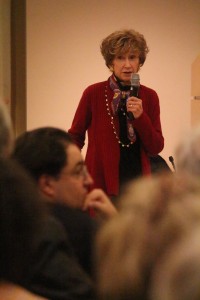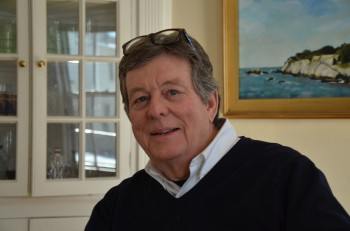For the past few weeks, Belmont’s Town Clerk Ellen Cushman has been receiving an increasing number of calls, emails and personal visits from residents on the same topic, the Proposition 2 1/2 override on the Town Election ballot set for April 7.
But the residents were not seeking information about the Question 1. Rather, they showed Cushman examples of vitriol from neighbors or strangers on what side they took on Question 1: angry personal attacks in email and notes left on their property, political signs taken or destroyed, biting comments on social media.
“They’re upset that people are attacking their character for a political position,” Cushman told the Belmontonian Thursday afternoon, April 2.
“It’s been very bad tempered and personal,” she added.
After hearing from Belmont Police Chief Richard McLaughlin that his department has received similar messages, Cushman decided it was time to act by sending an extraordinary email to Town Meeting Members, elected officials, and town department heads to call for a return to civility in the election season.
Under the subject line, “The Community of Belmont – We All Share Responsibility,” (see the email below) Cushman spoke of “rising tide of negative emotion and malicious deeds and speech” against residents on the override question. Declaring she “abhor(s)” the actions taking place, Cushman is calling for those receiving the email to ask anyone they see participating in such acts to stop them and have the people return to “respectful discourse.”
The note is the first time the long-time Belmont resident can recall a town official requesting residents to remain civil during an election. Heated campaigning is not new to Belmont, infamous for the poison pen letters sent days before elections impugning the character of residents seeking town office.
(The Belmontonian has recently deleted Facebook and website comments for phrases and words that questioned poster’s characters.)
After speaking to McLaughlin, Cushman felt the underlying current of ugliness that “people were afraid to have conversations” about the election.
“It reached s a point where someone needed to notify residents of what’s happening,” said Cushman, hoping that residents realize they will still be neighbors on April 8.
While most of her focus is on the day of elections, Cushman said her mandate also is to make sure residents have the right to participate in the election process.
“Honestly, all I’m attempting to say is just be respectful,” she said.
- Vicious emails have been sent to individual residents, stating that other residents “hate” the person who has announced an intention to vote a certain way
- Political signs on private property, both Yes and No, have been removed
- Handwritten notes containing aggressive, distressing language have been attached to political signs on private property
- Facebook posts, online commentary and blogs that question the integrity of an individual volunteer rather than examine the person’s political stance



